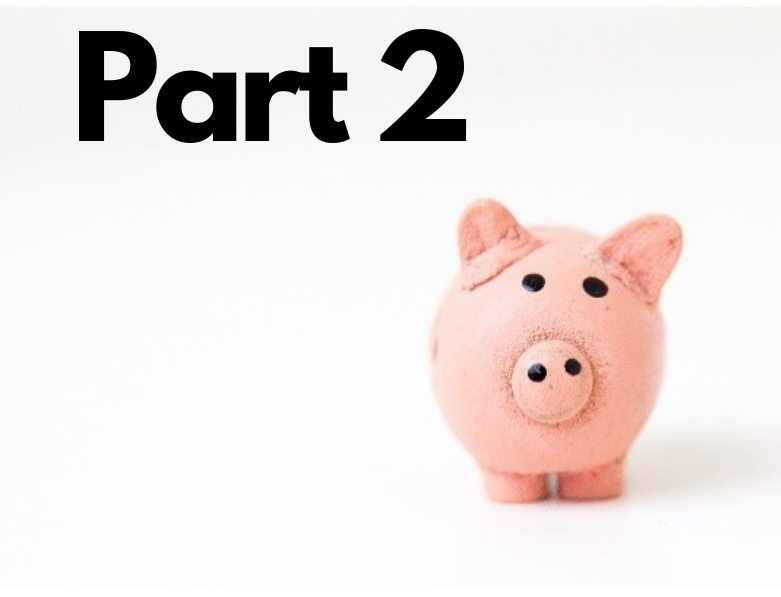
Welcome to part 2 of the ‘Introduction to saving’ series. Part 1 covered the idea of saving and made a case for its necessity in meeting your financial goals. This post goes further and explores the ‘How’ and ‘Where’ of saving, specifically: 1. How much to save2. How to categorise your savings3. Where to save
How to save – How much?
A key challenge for most of us is finding the spare cash to save in the first place. I suggest a couple of different ways to identify how much cash you can spare every month to save.
BUDGET. A budget requires you to note down your monthly income and expenditure to identify what spare cash or disposable income you have available for saving. Pros. A budget makes your income and expenditure clear and gives a useful insight into where you can make adjustments in order to increase your contributions to saving.Cons. Requires time, effort and discipline to put together. I have been budgeting for years but still feel like a novice. Adherence to the budget can be challenging, unless you have an iron discipline there will be months where your spending goes up (not so good) and down (good) so an additional level of discipline is required.
This post gives a detailed approach to budgeting and there is also a free budget template here which contains step by step instructions for completion. Alternatively an internet search will throw out a number of budget spreadsheets and apps available which you can tailor to your needs.
PAY YOURSELF FIRST. This involves determining what your post tax income is, deciding what percentage to put away, actually putting the money away and then living off the rest. Pros. Simple and quick approach. Once you decide on a number you can put away a consistent amount of money every month. Cons. Requires discipline to implement and may be challenging to avoid dipping into your savings if some unplanned expenditure comes up.
USE YOUR AGE. Your age is converted to a percentage and applied to your monthly salary. For example if you are 22 years old and earn ₦50,000 per month then aim to save ₦11,000 per month which is 22% of your monthly income.
Pros. Very simple method which forces you to increase your savings as you get older which should hopefully coincide with greater income.
Cons. Like ‘paying yourself first’ it does not take into account your expenses and it can be challenging to live on a randomly determined amount every month. This method also assumes that your salary will increase as you age which is not always the case. It also does not factor in that for many of us, depending on your stage of life, your expenses will also increase which can make it difficult to save a greater part of your income – not for the faint hearted! Whatever approach you take it is important to identify the / an amount and then consistently stick with it over months and years.
How to save – Categories
One thing that I have found useful in maintaining a savings habit is to categorise or organise my savings accounts according to the ‘end game’ or specific purpose for those savings. I distinguish between four distinct categories of saving:

This post provides a detailed look at each category and below is a brief summary to get you started.
Short term – Rainy day’The rainy day’ in Nigerian parlance is one that is almost certain to happen. As a people, we have a good undertsanding that ‘no condition is permanent’, as we have sunny days,rain too shall also come. Rainy day savings are, in my opinion, are the first and most basic set of savings that any of us should have. Rainy day savings need to be easily accessible at short notice and of substantial size to be of comfort when the inevitable rainy day happens.
Short term – SpecificSpecific savings are the next category of note. We all have needs as well as desires and it makes sense to plan aheadaccessible, idioms a good understanding and get your started.
From a practical perspective i also have 4 separate savings accounts that align to each of these purposes.

